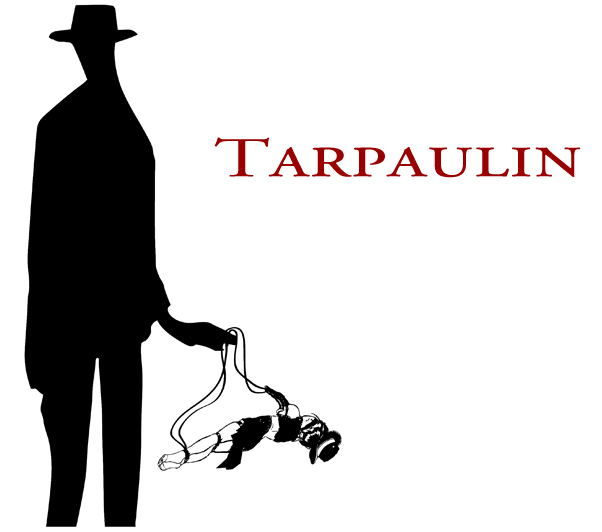Language Death Night Outside, Poem Novel
Peter Waterhouse
Translated by Rosmarie Waldrop (2009)
U.S. publisher: Burning Deck/Anyart, Providence, RI.
Originally published in 1989 as Sprache Tod Nacht Aussen (Rowohlt Verlag GmbH).
125 pp.
Reviewed by Katie Eberhart
Reading Language Death Night Outside is like traveling to a foreign country except the country you travel through is not merely landscape but a web of the narrator's observations, experience, points of reference, and language. The subtitle Poem Novel suggests more freedom and fancy than a single genre but also more responsibility to deliver both story and poetry, or a poetic story. Clearly, there are multiple ways these forms coexist and Waterhouse has found many, including a narrator's view which switches between moment-by-moment observation and reflection, and investigation of what occurred in the past. The story is centered around Vienna, Austria but spreads outward to places like Chernowitz and Zagreb as well as southern Austria and Italy. On the first page the forces are established, including poetry and the death of the narrator's grandfather.
In the fall of 1984 I heard poems by Andrea Zanzotto. The poster had announced a hermetic poet. I was working on a long essay on Paul Celan. My interest jumped over. Zanzotto canceled. A bilingual reading with rough translations took place without the poet. The rough translations convinced me. Two hours. A survey of the work, I could not get the poems out of my mind. . . (7)
The narrator lives within a chain of events that is like a slow motion exploration of feelings and experience as if walking along a street and noticing everything within a rhythm of short sentences and repetition of the subject or a pronoun that imparts an urgency to encounters and observations. The narrator is both investigating history and considering where his grandfather's life intersected historical events. For example, after leaving a lecture on the “intellectual development of [Austria] since 1918” where matters of national guilt and national consciousness were hotly debated, the narrator recalls his grandfather:
. . . I sat at home. I thought of grandfather's face. I thought of grandfather's eyes. I thought of grandfather as a soldier in the army. I thought of grandfather's carpentry. . . . I thought of grandfather's flight from the family. I thought of the family of seven in the one-and-one-half room apartment, with the water faucet out in the hall. I thought of grandfather's long illness. . . . (71)The tension within this work, besides nuances of language, exists between the larger events of history and what a person can now observe or even comprehend. For example, the peripatetic narrator ponders something that sounds simple enough, looking east:
I drove to the eastern edge of the city. I stood in the field. I looked east. In looking east I had the impression of thinking outside my language. I drove on straight highways to the eastern border of the country. The highway ended at the river. The bridge across the river lay there collapsed. I climbed over parts of the bridge. I looked at the thicket on the bank. I retreated. I walked across the wet meadows. . . . (16)But nothing is simple. The narrator has traveled to Slovenia and the experience includes that of staying at a castle, of winter quarters for a circus in the castle yard, of children playing, of “In the evening, five fires were lit in the yard” until it becomes a matter of looking toward “the land of morning.” The narrator says “I thought of the land of morning as thought outside my language. I closed my eyes. I said a sentence. Between the words was the land of morning.” (16) The narrator is searching for ways to understand the past, and it seems possible that there is a puzzle or paradox with how we come to grips with memory, guilt, and survival that connects to language as if it is “between the words.”
Reading Language Death Night Outside, you have entered a very private space of pondering that ripples outward from the narrator's experience and world view and whatever else comes his way including three long poems (the poets are Andrea Zanzotto, Paul Celan, and Carl Rakosi). These poems act as an outside force on the narrative but also become internalized because of the narrator's efforts to find meaning in each poem. The effect is of larger ideas that remain even after the narrative continues into some other inquiry.
Waterhouse's Poem Novel is unique in style and language. The short sentences and repetition give the feeling of a long poem although the appearance is of prose. In Language Death Night Outside, Waterhouse has created a literary place where the personal and institutional intersect, where philosophy butts against history, where abstraction spreads across experience and landscape, and especially the idea of a place “between the words.” The questions in this book are interesting and crucially important and it is a book that should be read as we drift farther from times that are still difficult to talk about, but times that Peter Waterhouse has made progress in extracting from “between the words.”
* * *
Katie Eberhart's writing and poems exploring the fine margin between people and landscape can be found in the Palmer (Alaska) Arts Council poetry anthology Voices Between Mountains and the online literary journal Plasma Magazine. Katie was selected as an Artsmith Artist Resident in 2009 and has an MFA in Creative Writing from the Rainier Writing Workshop.





